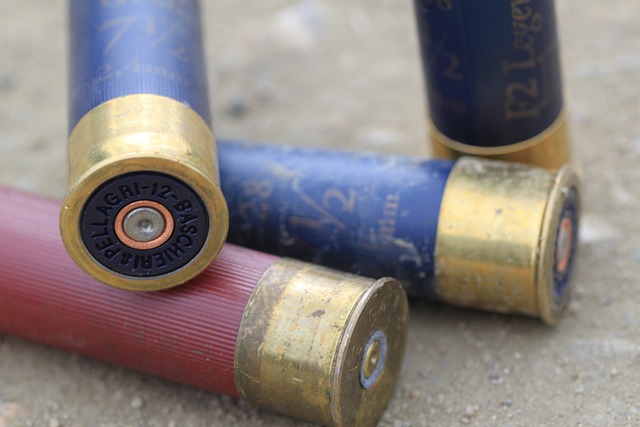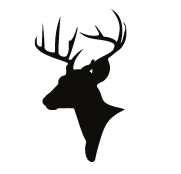What Choke for Turkey Hunting: A Guide to Choosing the Right One

When it comes to turkey hunting, selecting the right choke can make all the difference in the world. A choke is a constriction at the end of a shotgun barrel that controls the spread of the shot. The right choke can make your shot more accurate, while the wrong one can result in missed opportunities.
There are several factors to consider when choosing a choke for turkey hunting. One of the most important is the distance at which you plan to shoot. Another factor is the type of shot you plan to use. Some hunters prefer larger shot sizes, while others opt for smaller ones. Additionally, the type of gun you are using can also impact the effectiveness of a particular choke.
Understanding Choke Tubes
When it comes to turkey hunting, choosing the right choke tube is essential for a successful hunt. This section will cover the basics of choke tubes, including what they are, the different types of choke tubes available, and the various choke tube constrictions to consider.
What are Choke Tubes?
Choke tubes are accessories that screw into the end of a shotgun barrel to control the spread of shot. They work by constricting the diameter of the barrel’s muzzle, which in turn affects the spread of the pellets as they exit the barrel.
Types of Choke Tubes
There are several types of choke tubes available, including fixed choke and interchangeable choke tubes. Fixed choke tubes are built into the shotgun barrel and cannot be removed or changed. Interchangeable choke tubes, on the other hand, can be easily swapped out to suit different hunting situations.
Choke Tube Constrictions
Choke tube constrictions refer to the amount of constriction at the end of the barrel. The amount of constriction affects the spread of the shot and the distance at which it is effective. Some common choke tube constrictions include:
- Cylinder Choke – This choke has no constriction and is best used for shooting at close range.
- Improved Cylinder Choke – This choke has a small amount of constriction and is best used for shooting at short to medium range.
- Full Choke – This choke has a significant amount of constriction and is best used for shooting at long range.
- Extra-Full Choke – This choke has the most constriction and is best used for shooting at very long range.
When choosing a choke tube for turkey hunting, it is important to consider the distance at which you will be shooting and the size of the shot you will be using. A tighter constriction will result in a denser pattern at longer ranges, while a looser constriction will result in a wider pattern at shorter ranges.
Selecting the Right Choke for Turkey Hunting
When it comes to turkey hunting, selecting the right choke for your shotgun is crucial. A choke is a constriction at the end of the barrel that controls the spread of the shot. The right choke will help you achieve a tight and consistent pattern, increasing your chances of a successful hunt. Here are some factors to consider when selecting a choke for turkey hunting:
Factors to Consider
- The distance you plan to shoot
- The type of ammunition you will be using
- The shotgun you will be using
- Your personal shooting style and preferences
It’s important to note that no single choke is perfect for every situation. You may need to experiment with different chokes and ammunition to find the combination that works best for you.
Recommended Choke Tubes for Turkey Hunting
There are several choke tubes on the market that are specifically designed for turkey hunting. Here are some of the most popular:
| Choke Tube | Features |
|---|---|
| Carlson’s Longbeard XR | Extended range constriction, shot-optimizing wad design |
| Indian Creek Black Diamond Strike | Maximum constriction, diamond-cut wad design |
| Primos Jellyhead Maximum Turkey Choke | Extended range constriction, ported for reduced recoil |
These choke tubes are known for their tight and consistent patterns, making them popular choices among turkey hunters.
Choke Tube Recommendations for Specific Shotgun Models
While the above choke tubes are great options for many shotguns, some shotgun models may perform better with different chokes. Here are some recommendations for popular shotgun models:
- Remington 870: Carlson’s Longbeard XR
- Mossberg 500: Indian Creek Black Diamond Strike
- Mossberg 835: Primos Jellyhead Maximum Turkey Choke
- Rob Roberts Custom Guns: Rob Roberts
It’s important to do your research and consult with experts to determine the best choke for your specific shotgun model.
Understanding Shotshells
Shotshell Components
A shotshell consists of four main components: the primer, powder, wad, and shot. The primer ignites the powder, which then propels the wad and shot out of the shell. The wad separates the shot from the powder and helps the shot maintain its shape as it travels through the barrel. The shot is the actual pellets that are fired from the shotgun.
Types of Shotshells
There are two main types of shotshells: lead and non-toxic. Lead shot has been the traditional choice for many hunters, but it has been banned in some areas due to environmental concerns. Non-toxic shot is now required in many areas for hunting waterfowl and other game. Tungsten super shot is a popular non-toxic alternative to lead shot because it is denser and can deliver more energy to the target.
Shotshell Sizes and Payloads
Shotshells are available in a variety of sizes and payloads. The size of the shot is measured by a number, with smaller numbers indicating larger shot. For example, #4 shot is larger than #7 shot. The payload refers to the number of pellets in the shotshell. A larger payload will deliver more pellets to the target, but it will also increase recoil and decrease the range of the shot.
When choosing a shotshell for turkey hunting, it is important to consider the distance of the shot, the size of the turkey, and the type of terrain. A larger shot size and payload may be necessary for longer shots or larger turkeys, while a smaller shot size and payload may be more appropriate for shorter shots or smaller turkeys.
Understanding Shotguns and Ammunition
When it comes to turkey hunting, understanding shotguns and ammunition is crucial. A turkey gun is a specific type of shotgun that is designed to deliver a tight pattern of shot at a distance. In order to choose the right ammunition for your turkey gun, it is important to understand the different types of shotguns and ammunition available.
Shotgun Types and Features
Shotguns come in a variety of types and sizes, but for turkey hunting, a pump-action or semi-automatic shotgun is typically the best choice. These types of shotguns allow for quick follow-up shots, which can be important when hunting turkeys. Additionally, turkey guns often have specialized features such as adjustable chokes and sights that help hunters achieve a tight pattern at a distance.
Shotgun Ammunition Types
When it comes to ammunition, there are two main types: lead and non-toxic. Non-toxic ammunition is required in many areas due to concerns about lead contamination. Within the non-toxic category, there are several types of shot available including steel, tungsten, and bismuth. For turkey hunting, many hunters prefer to use TSS (Tungsten Super Shot) due to its superior penetration and density.
Shotgun Ammunition Sizes
Shotgun ammunition comes in a variety of sizes, with smaller numbers indicating larger shot. For turkey hunting, #4, #5, and #6 shot are all popular choices. #4 shot is the largest and delivers the most energy, but it also has fewer pellets per shell. #6 shot is the smallest and has the most pellets per shell, but it delivers less energy. #5 shot is a good compromise between the two, delivering a good balance of energy and pellet count.
Understanding Shot Patterns
When it comes to turkey hunting, understanding shot patterns is crucial for a successful hunt. Shot pattern refers to the spread of shot pellets after they leave the shotgun barrel. This section will cover what shot pattern is, the factors that affect shot pattern, and how to measure shot pattern.
What is Shot Pattern?
Shot pattern is the distribution of shot pellets on a target at a specific distance. The size of the shot pattern is determined by the choke constriction, the shot size, and the distance from the shooter to the target. A tight choke will produce a smaller shot pattern, while an open choke will produce a larger shot pattern.
Factors Affecting Shot Pattern
Several factors can affect shot pattern, including range, pattern density, and patterning. Range is the distance between the shooter and the target. As the range increases, the shot pattern will become larger. Pattern density refers to the number of pellets in a given area. A higher pattern density will result in a denser shot pattern. Patterning is the process of testing a shotgun to see how it performs at different ranges and with different loads.
Measuring Shot Pattern
There are several ways to measure shot pattern, including using a pattern board or a paper target. A pattern board is a large piece of cardboard or plywood that is set up at a specific distance from the shooter. The shooter then fires a shot at the board, and the pattern is measured and analyzed. A paper target is a sheet of paper with a bullseye or other target printed on it. The shooter fires a shot at the target, and the pattern is measured by counting the number of pellets in each ring of the target.
Conclusion
After thorough research and analysis, it is clear that choosing the right choke for turkey hunting is crucial for a successful hunt. The ideal choke will depend on various factors such as the range, shot size, and hunting environment.
For close-range hunting, a cylinder or improved cylinder choke may be suitable, while for longer ranges, a full or extra-full choke may be more effective. It is important to consider the shot size as well, with larger shot sizes requiring a more open choke.
Additionally, the hunting environment should also be taken into account. Hunting in open fields may require a tighter choke, while hunting in wooded areas may benefit from a more open choke to allow for better maneuverability.
Ultimately, the key to choosing the right choke for turkey hunting is to experiment and find what works best for the individual hunter and their specific hunting situation. By considering all the factors and using the appropriate choke, hunters can increase their chances of a successful and enjoyable hunt.
